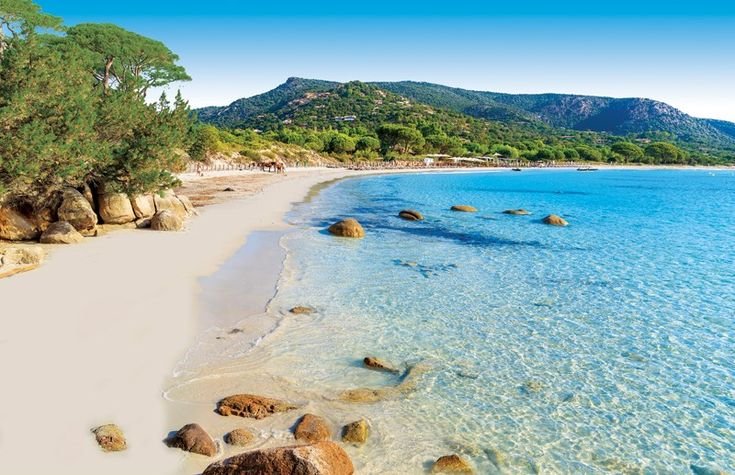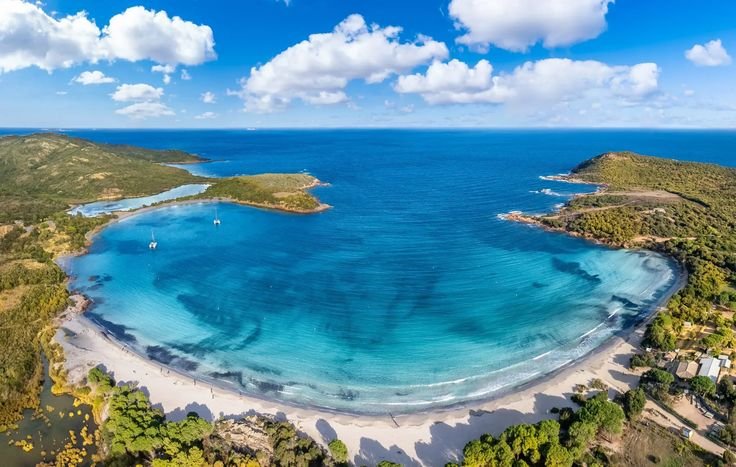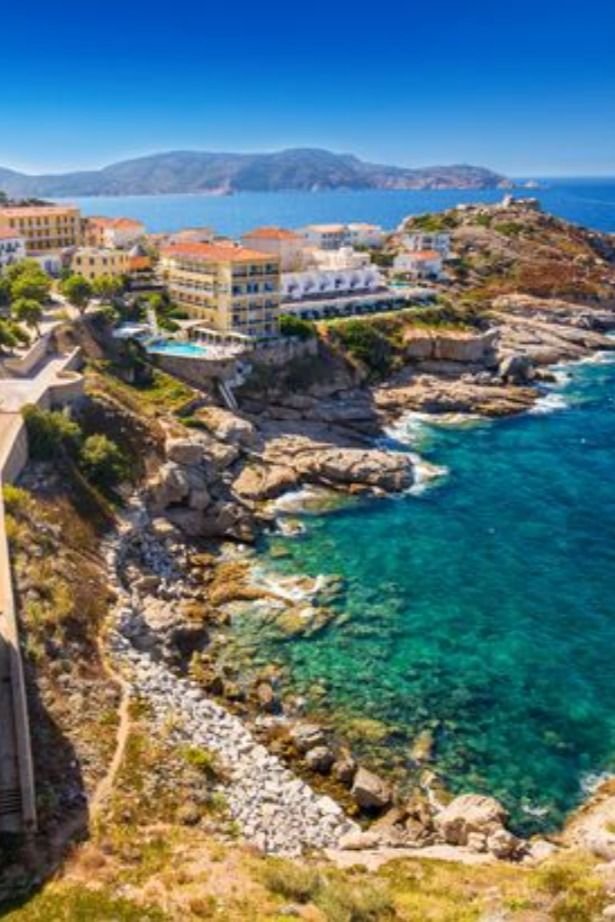Introduction to Corsica’s Coastal Wonders
Corsica best beaches represent the crown jewels of Mediterranean coastlines, captivating visitors with their extraordinary beauty and diversity. This French island, known as the “Island of Beauty,” rises dramatically from the sea with a coastline that rivals any in the world. From Palombaggia to Saleccia, Corsica best beaches combine crystalline azure waters with pristine white sand, secluded coves nestled between rugged cliffs, and a spectacular backdrop of mountains that plunge directly into the sea. What makes these Corsica best beaches truly exceptional is their unspoiled nature—many remain refreshingly undeveloped, offering an authentic Mediterranean experience increasingly rare in today’s world. From the moment your feet touch the warm sand, you’ll understand why locals fiercely protect these coastal gems and why Corsica continues to captivate beach connoisseurs from around the globe.
- Palombaggia Beach stands as Corsica’s crown jewel, where fine pink-tinted sand stretches alongside turquoise waters framed by umbrella pines that provide natural shade during scorching summer afternoons, creating a picture-perfect Mediterranean scene that has graced countless travel magazine covers.
- Santa Giulia Bay offers a shallow, warm-water lagoon ideal for families, with its gently sloping beach and crystal-clear waters providing safe swimming conditions that make it particularly suitable for those traveling with young children while still maintaining the spectacular beauty that characterizes Corsica’s finest coastal areas.
- Rondinara Beach forms a perfect horseshoe bay between two headlands, with its position offering protection from winds and creating calm, clear waters that give this beach its reputation as one of the most beautiful in Europe, especially striking for its natural symmetry viewed from the surrounding hills.
- Calvi Beach extends along a 4-mile stretch beside the impressive citadel, combining stunning natural beauty with historical significance and convenient access to restaurants and amenities, making it ideal for visitors who want both beach relaxation and cultural exploration within easy reach.
- Saleccia Beach remains one of Corsica’s most unspoiled treasures, accessible primarily by boat or 4×4 vehicle, rewarding adventurous travelers with powder-white sand and transparent waters that rival Caribbean destinations but with a fraction of the crowds even during peak season.
Best Time to Visit Corsica’s Beaches
The Mediterranean climate blesses Corsica with long, hot summers and mild winters, but timing your beach visit requires careful consideration to balance ideal conditions with crowd levels. The island’s beaches transform dramatically throughout the seasons, offering distinctly different experiences depending on when you visit. From the peaceful solitude of spring to the vibrant energy of high summer, each period has its unique charm and character that appeals to different types of travelers seeking their personal perfect beach experience.
- Late May to early June represents the sweet spot for beach enthusiasts seeking balance, as the sea has warmed to comfortable swimming temperatures (around 20°C/68°F) while the summer crowds haven’t yet descended, allowing you to experience popular beaches like Palombaggia without fighting for space on the sand.
- July and August bring peak season conditions with guaranteed sunshine, water temperatures reaching a bath-like 26°C/79°F, and a vibrant atmosphere with beach bars and water sports operators in full swing, though this comes with higher accommodation prices and the need to arrive early at popular beaches to secure your spot.
- September offers what many consider the ultimate Corsican beach experience, with the summer heat moderating to pleasant temperatures, the Mediterranean Sea still delightfully warm from months of sunshine, and a significant reduction in visitor numbers as families return home for school, creating an ideal environment for couples and independent travelers.
- Early October can be a gamble worth taking for those seeking solitude, as many beaches become virtually private paradises with temperatures often remaining warm enough for swimming, though you’ll find most beach facilities closed for the season and should be prepared for occasional autumn rain showers between periods of sunshine.
- Winter months (November through April) transform Corsica’s beaches into windswept, wild landscapes of extraordinary beauty, perfect for contemplative walks and photography rather than sunbathing, with the dramatic contrast between turbulent seas and snow-capped mountains in the distance creating scenes that few summer visitors ever witness.
Natural Features of Corsica’s Magnificent Beaches
What sets Corsica best beaches apart from other Mediterranean destinations is their remarkable diversity within a relatively compact island. Nature has blessed this French paradise with an astonishing variety of coastal formations, each with distinctive characteristics that create entirely different beach experiences just a short drive apart.
Geological Diversity and Formations
From the perfect white sand beaches of the north to the dramatic granite rock formations of the west coast, Corsica offers a geological showcase that enhances the visual impact of its stunning shorelines.
- The distinctive pink granite outcrops found along the west coast create dramatic natural sculptures and intimate coves at beaches like Roccapina, where the famous lion-shaped rock formation stands sentinel over a perfect crescent of golden sand, providing both spectacular photographic opportunities and natural windbreaks that shelter swimmers from the prevailing winds.
- Crystal-clear water visibility extending up to 30 meters deep results from Corsica’s lack of major industrial development and strict environmental protection, allowing snorkelers at beaches like Piana to observe vibrant marine life and underwater rock formations with exceptional clarity that rivals famous tropical destinations.
- The striking color palette shifts from beach to beach, with Palombaggia’s pinkish sand contrasting with Santa Giulia’s pure white powder and the deep amber hues of Rondinara, creating a visual feast for photographers and beach connoisseurs seeking varied seaside experiences during their Corsican holiday.
- Mountainous backdrops create dramatic scenery at beaches like Ostriconi, where the desert des Agriates meets the sea beneath rugged peaks, offering hikers the rare opportunity to climb from sea level to panoramic viewpoints and back down to swim within a single morning excursion.
- Protected marine environments surrounding many Corsican beaches have established thriving ecosystems, particularly in the Scandola Nature Reserve near Porto, where strict conservation efforts have preserved underwater habitats featuring vibrant gorgonian coral fans, octopuses, groupers, and colorful Mediterranean fish species visible to snorkelers just meters from shore.
Exciting Activities and Experiences at Corsica’s Beaches
Corsica best beaches offer far more than just sunbathing opportunities—they serve as gateways to diverse experiences that connect visitors with the island’s rich natural environment and cultural heritage. The island’s unique geography, where mountains meet the sea, creates a playground for adventure seekers while still accommodating those who prefer gentle relaxation.
Water Sports and Maritime Adventures
From water-based thrills to cultural explorations, Corsica’s coastline provides the perfect setting for creating unforgettable Mediterranean memories.
- Snorkeling and diving opportunities abound around the Lavezzi Islands marine reserve near Bonifacio, where protected status has created a flourishing underwater environment featuring granite boulder mazes, Posidonia seagrass meadows, and abundant marine life including grouper, barracuda, and even the occasional dolphin, accessible to both certified divers and casual snorkelers.
- Sea kayaking expeditions reveal otherwise inaccessible beaches and caves along the Calanques de Piana UNESCO World Heritage site, allowing adventurous travelers to paddle beneath towering red granite cliffs, explore hidden grottoes carved by millennia of wave action, and picnic on tiny beaches unreachable by land or larger boats.
- Traditional fishing villages dot the coastline near beaches like Centuri on Cap Corse, where visitors can watch fishermen unload their daily catch of rock lobster directly to harbor-side restaurants, then enjoy supremely fresh seafood prepared according to generations-old Corsican recipes while overlooking the same waters where their meal was caught hours earlier.
- Coastal hiking trails connect many of Corsica’s finest beaches via the famous Sentier des Douaniers (Customs Officers’ Path), providing spectacular clifftop views and access to secluded coves like Ficajola near Porto, rewarding moderately fit walkers with private swimming spots and a deeper connection to the island’s wild natural beauty.
- Sailing charters depart from major coastal towns like Calvi and Porto Vecchio, offering day trips or multi-day adventures that showcase Corsica’s coastline from its most flattering perspective, with opportunities to anchor in secluded bays inaccessible by road and swim in pristine waters that few land-based travelers ever experience.

Accommodation Options Near Corsica’s Best Beaches
Finding the perfect place to stay near Corsica’s beaches requires balancing proximity to the shore with the authentic island experience. The island offers remarkably diverse accommodations that cater to every preference and budget, from luxury resorts with private beach access to charming family-run establishments that provide genuine Corsican hospitality. What distinguishes Corsica from other Mediterranean destinations is the relative scarcity of large-scale development, with many coastal accommodations thoughtfully integrated into the natural landscape.
- Boutique beachfront hotels like La Plage Casadelmar near Porto-Vecchio offer refined luxury with direct access to private beaches, contemporary design that incorporates local materials, and exceptional restaurants showcasing Corsican cuisine, perfect for travelers seeking an upscale experience without sacrificing authentic island character.
- Family-run bed and breakfasts known locally as chambres d’hôtes flourish in coastal villages like Algajola, where converted historic homes provide intimate accommodations with personalized service, home-cooked breakfasts featuring local products, and invaluable insider advice about hidden beaches and restaurants that rarely appear in guidebooks.
- Well-appointed camping sites situated near premium beaches such as Camping Cupulatta near Portigliolo beach offer an affordable yet comfortable option with modern facilities, rental tents or cabins, and direct beach access, allowing budget-conscious travelers to fall asleep to the sound of waves without compromising on location.
- Secluded vacation villas available for weekly rental in areas like the Valinco Gulf provide privacy and flexibility for families or groups, typically featuring private pools, outdoor cooking areas, and panoramic sea views, with many positioned just a short walk from smaller, less-known beaches away from the main tourist centers.
- Agriturismo experiences on working farms near coastal areas combine rural tranquility with beach access, particularly in the fertile eastern plain, where restored farmhouses offer authentic accommodations surrounded by olive groves and vineyards just kilometers from beaches like Moriani, allowing visitors to experience both agricultural traditions and seaside relaxation.
Local Cuisine and Coastal Dining Experiences
Corsica’s culinary identity is deeply connected to both the sea and mountains, creating a distinctive food culture that enhances any beach holiday. Coastal dining on the island ranges from sophisticated restaurants to humble fishermen’s shacks, all united by a devotion to fresh, local ingredients and traditional preparation methods. The proximity of mountains to coast means seafood often shares the table with mountain specialties, creating unique flavor combinations that reflect Corsica’s diverse landscapes.
- Beachfront restaurants at locations like Pinarello beach serve the day’s catch prepared with minimal intervention—often simply grilled with local herbs and olive oil—allowing the exceptional quality of Mediterranean fish like sea bream, red mullet, and dentex to speak for itself, typically paired with crisp local white wines made from native Vermentinu grapes.
- Traditional fishermen’s huts transformed into casual eateries, locally known as paillotes, appear seasonally on beaches like Capo di Feno, offering simple yet sublime seafood platters, freshly prepared seafood pasta, and refreshing drinks served just steps from the water’s edge, creating dining experiences that perfectly capture the relaxed spirit of island life.
- Local specialties including aziminu (Corsican fish stew), sea urchin pasta, and oursin (sea urchin) can be sampled at family-run establishments in fishing villages like Centuri, where these delicacies follow generations-old recipes and showcase the island’s seafood expertise, offering a taste of authentic maritime culture beyond tourist menus.
- Sunset aperitivo traditions flourish at beach bars like those at Arone beach, where locally-produced drinks including cap corse (a fortified wine), myrtle liqueur, and chestnut beer accompany complimentary tapas-style appetizers during the golden hour, creating a relaxing transition from beach day to evening with spectacular ocean views.
- Food and fish markets in coastal towns like Porto Vecchio allow visitors to assemble perfect beach picnics from local cheeses, cured meats, fresh fruit, and artisanal breads, providing an economical and authentic alternative to restaurant meals that can be enjoyed on more remote beaches, with many vendors happy to recommend combinations and explain traditional products.
Practical Travel Tips for Visiting Corsica’s Beaches
Navigating Corsica’s coastal treasures requires some insider knowledge to maximize enjoyment while minimizing frustrations. The island’s geography, weather patterns, and local customs create unique considerations for beach visitors. Understanding these practical aspects helps ensure your Corsican beach experience lives up to expectations, whether you’re planning a dedicated beach holiday or incorporating coastal visits into a broader island exploration.
- Transportation considerations are essential when planning your beach itinerary, as some of Corsica’s most spectacular beaches like Saleccia require either boat transfers (departing regularly from Saint-Florent harbor), off-road vehicles capable of handling rough tracks, or significant hiking, making advance planning crucial for accessing these more remote coastal gems.
- Beach facilities vary dramatically throughout the island, with popular beaches near major towns offering rentals, restaurants and lifeguards, while more isolated locations provide no services whatsoever, requiring visitors to bring adequate water, sun protection, food supplies, and potentially even shade structures when venturing to wilder stretches of coastline.
- Environmental awareness remains vital when visiting Corsica’s beaches, as many form part of protected areas where regulations prohibit collecting shells or disturbing wildlife, smoking, or leaving any waste behind, with locals taking great pride in maintaining their island’s natural beauty and potentially confronting visitors who don’t respect preservation efforts.
- Seasonal hazards require attention, particularly in early summer when Portuguese man-o-war jellyfish sometimes appear along northern beaches, and during periods when strong winds create challenging swimming conditions, making it important to observe warning flags, respect lifeguard instructions, and ask local advice about current conditions.
- Cultural sensitivities around nudity should be understood before disrobing, as while specific beaches like Cupabia have designated naturist sections where nudity is accepted, most Corsican beaches are family-oriented spaces where conservative bathing attire is expected, reflecting the island’s traditional values despite its French governance.

Exploring Beyond the Beach: Corsica’s Coastal Attractions
While Corsica’s beaches deservedly capture attention, the coastal areas surrounding these sandy havens offer equally compelling experiences that enhance any island visit. The seamless connection between sea, mountain and cultural heritage creates opportunities to combine beach relaxation with enriching activities. Taking time to explore beyond the shoreline reveals a more complex and rewarding Corsica, where ancient traditions and spectacular landscapes provide context for the island’s celebrated coastline.
- Ancient Genoese watchtowers dot the coastline at strategic intervals, including the perfectly preserved example at Campomoro beach, offering historical perspective on Corsica’s maritime past when these structures protected against pirate raids, with many towers accessible via short hikes that reward climbers with spectacular panoramic vistas of beaches and bays.
- Coastal vineyards flourishing in areas like Patrimonio near the northwestern beaches produce distinctive wines influenced by maritime terroir, with many wineries offering tastings with sea views where visitors can sample unique varieties like Niellucciu and Sciaccarellu that pair perfectly with local seafood, creating a delightful afternoon diversion from beach activities.
- Traditional boat builders maintain workshops in harbors like Bonifacio, where visitors can observe the construction and restoration of wooden fishing vessels using techniques passed through generations, providing fascinating insight into the craftsmanship that has supported Corsica’s maritime economy for centuries and shaped coastal communities.
- Botanical coastal walks near beaches such as Rondinara showcase Corsica’s remarkable endemic plant species, including immortelle flowers whose distinctive curry-like scent perfumes the air and features prominently in local perfumes, offering a sensory experience that complements the visual beauty of the shoreline and varies dramatically with seasonal blooming patterns.
- Prehistoric coastal sites including standing stones (stantari) and ancient settlements can be found near beaches along the west coast, most impressively at Filitosa near Portigliolo beach, providing compelling evidence of human habitation dating back thousands of years and offering thoughtful visitors a deeper appreciation of the timeless appeal of Corsica’s coastal landscapes.

Conclusion: Embracing Corsica’s Coastal Magic
Corsica’s beaches offer more than just beautiful places to swim and sunbathe—they provide gateways to understanding the island’s unique character. The remarkable diversity of coastal experiences available within such a compact island makes Corsica an unrivaled beach destination in the Mediterranean. From the famous stretches of sand that grace travel magazines to hidden coves known only to locals, each beach tells part of the island’s ongoing story. By approaching these coastal treasures with respect for their natural beauty and cultural significance, visitors can forge meaningful connections with this extraordinary island that will endure long after their footprints in the sand have washed away.
Whether you seek adventure, relaxation, cultural immersion, or gastronomic delights, Corsica’s beaches provide the perfect backdrop for creating lasting Mediterranean memories. The island rewards those who take time to explore its coastline thoroughly, revealing new dimensions of beauty around each headland and in every crystal-clear bay. As development pressure increases throughout the Mediterranean, Corsica stands as a remarkable example of coastal preservation, maintaining the authentic character that has captivated travelers for generations. This commitment to sustainability ensures that future visitors will continue to discover the same magic that makes Corsica’s beaches truly exceptional.

